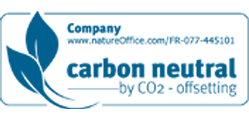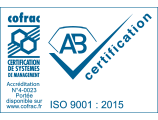How can one decision improve lab workflow, reduce overtime expenses, advance patient safety, expand sample storage capacity and improve the job satisfaction of lab staff?
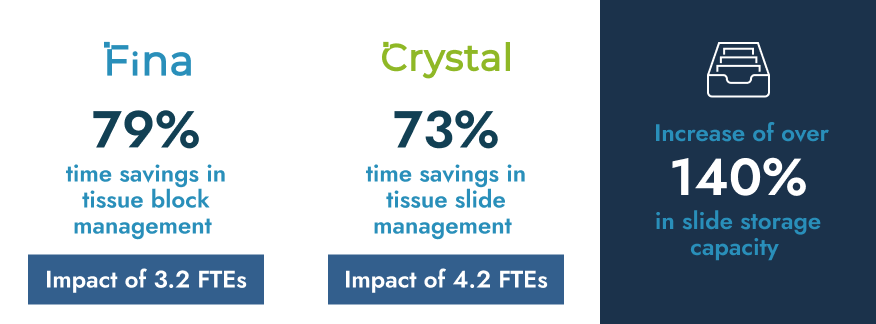
Background
The Cleveland Clinic Foundation (CCF) is one of the most well known and busiest histology labs in the United States, perhaps the world.
It consistently ranks in the top 10 of hospitals and cancer centers. On the main campus of the CCF, the histology lab handles an average of 3,684 new blocks and 7,818 new slides per day.
Challenge
Prior to April 2022, CCF was organizing all blocks and slides manually. This included:
- Sorting and filing samples in sequential order
- Retrieving samples for re-cuts, reflex testing, and further examination
- Re-sorting and re-filing samples
While intentions were always good, mistakes still happened because lab staff were not always successful at putting samples in sequential order. Refiling of samples was a process that presented even greater challenges. Even in the most diligent and careful labs, samples are misplaced and lost. CCF needed a way to reduce, even eliminate, mistakes with respect to sample management.
Further, CCF was putting over 20,000 hours of labor toward sample management every year. This added up to nearly 10 FTEs and was especially challenging in light of the shortage of qualified histology lab staff. CCF needed to save time and stop requiring their lab staff to perform mundane, tedious and menial tasks that have low impact on patient care and contribute to poor job satisfaction.
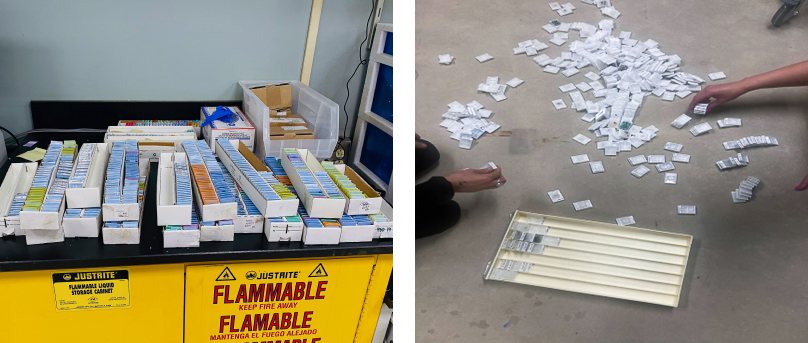
Decision
After extensive investigation of solutions to this problem, in April 2022 CCF adopted two new systems from Dreampath Diagnostics: ,
- Fina system (for tissue block management)
- Crystal system (for microscope slide management)
These systems were designed as new approaches to storing and retrieving tissue samples to improve workflow, enable fast & precise retrieval of samples, and improve patient safety.
Lab staff were naturally skeptical of these new systems at first. After decades of sequentially ordering samples, many users were reluctant to trust that these new systems could properly track and manage thousands of samples. However, after a short time, the reduced stress around potential for misplaced samples and the time gained to focus on activities connected to patient care made the entire lab staff believers in the new systems.
«The first day we were using the Fina
Linda McDonald. Histology Lab Manager (retired). Cleveland Clinic
system I came out of my office and asked Scott where all my blocks were. When he said they were already filed I didn’t believe him…until he showed
me. And that made me a believer! I had never seen that many blocks filed before that time in the day.»
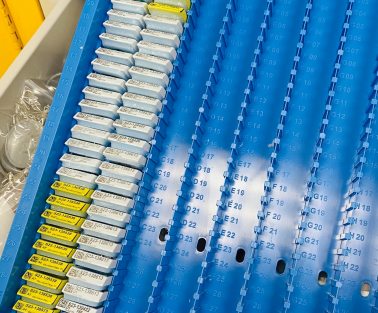
Results
Implementation of the Fina system saved the CCF staff over 6,500 hours annually in tissue block management.
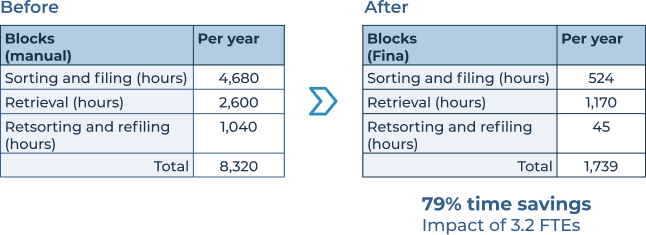
Implementation of the Crystal system saved the CCF staff over 8,500 hours annually in tissue slide management.
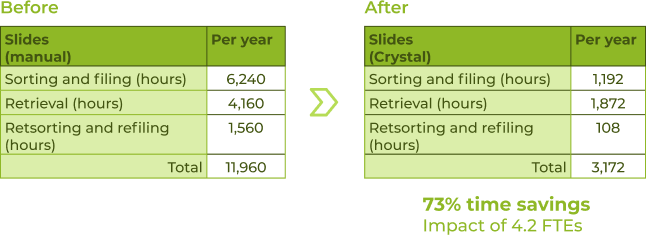
Implementation of these new systems have resulted in workflow improvements and productivity gains through:
- Reduction of touchpoints
- Reduction of wait points
- Eliminating missing samples that otherwise requires hours of manual searching by multiple lab staff members
Further benefits include:
- Reduced errors in the tissue sample management process through the elimination of manual steps.
- Lab staff are experiencing greater job satisfaction by being able to focus their tasks on truly value-added activities.
- Traceability and chain-of-custody for every block and slide specimen at a keystroke.
- Storage capacity in the slide archive room has increased by over 140% based on the new configuration of Crystal trays and cabinets.



